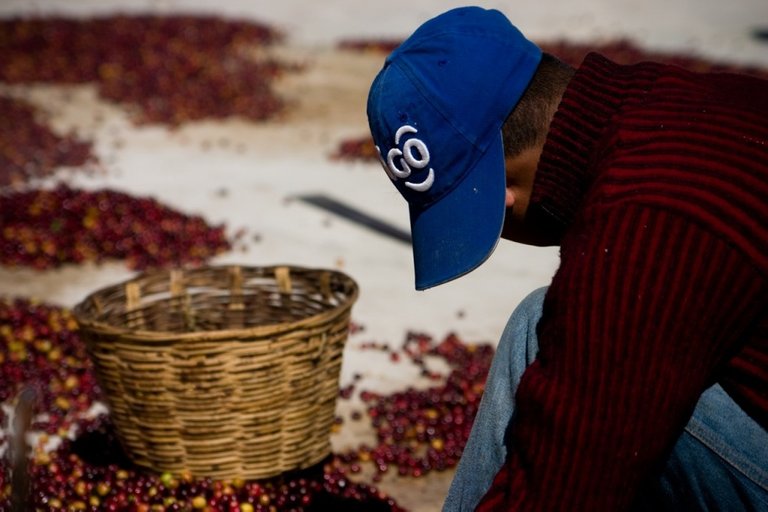
How coffee is processed and processed after harvest will affect even dramatic effects on the brewed coffee. So the processing process is an important factor that should not be missed in the coffee industry.
BEFORE knowing how coffee is processed, it's good if we know first the various structures and layers of fruit / coffee cherries. Basically, the coffee cherry structure consists of pericarp (outer meat skin) and coffee beans. Pericarp itself consists of several layers such as skin, skin flesh, lymph layer (which usually consists of natural sugar and some alcohol content) and parchment. Pericarp layer is the most frequently cleaned, but this layer also has an effect on the taste of coffee.
Once harvested, picked coffee fruits are then brought to the processing / grinding to separate the seeds with the skin of the flesh. These seeds will then be dried in order to remain safely stored before being sold to the market. Ideally, coffee has a natural moisture level of about 60%, but it is dried until the moisture is only about 11-12% only. The goal is that the coffee beans are not too moist and rot when the "waiting" is sold.
Once picked, the coffee cherries will soon be processed. Process processing also vary. Some of them are as follows.
NATURAL PROCESS

This natural process is also known as dry process. This process includes the oldest techniques that exist in the history of coffee processing. Once harvested, the coffee cherries will be spread over the surface of plastic plinths and dried in the sun. Some coffee producers sometimes dry them on brick terraces or on special drying tables that have airflow on the bottom. When dried under the sun, these coffee beans must be regularly turned back and forth for the coffee beans to dry out evenly, and to avoid fungus / decomposition.
In the natural process, the dried coffee fruit is still in the shape of a fruit / cherry, complete with all the layers. The natural and natural process will make the cherries fermented naturally as well because the cherry outer skin will peel off on its own.
- Common taste profile:
This natural process is considered capable of giving fruit-style notepads to coffee, with common hints such as blueberries, strawberries or tropical fruits. Coffee also tends to have acidity (low acidity), exotic flavors and more body.
WASHED PROCESS
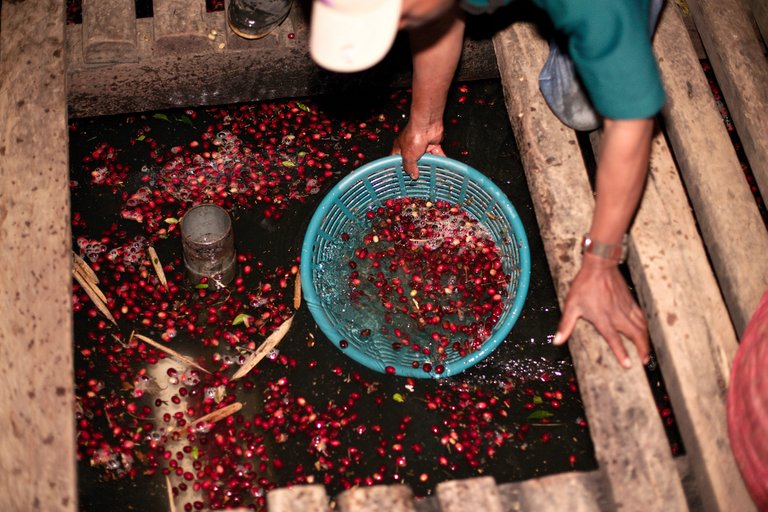
Or also known as wet process. Generally, this process aims to remove all skins of meat that are attached to the coffee beans before being dried. Once harvested, coffee cherries are usually 'selected' first by immersing them in water. Floating cherries will be discarded, while drowners will remain left for further processing because the cherries are thus considered to have matured.
Furthermore the outer skin and cherry bark of coffee will be removed by using a special machine called depulper (peeler). The coffee beans that have been released from the skin is then cleaned again by putting it into a special vessel filled with water so that the remnants of the skin that is still attached to completely thrown due to the fermentation process.
The duration, or length of fermented coffee varies by manufacturer. However, it generally ranges from 24-36 hours depending on temperature, the thickness of the sap layer on the coffee cherries, and the concentrate of the enzyme. If the temperature around it gets warmer, then the process will get faster too.
- Common taste profile:
Coffee washed process results generally have a cleaner character, light, slightly fruit taste, body tend to be mild and soft with acidity level (acidity) more.
HYBRID PROCESS
- Pulped natural process.
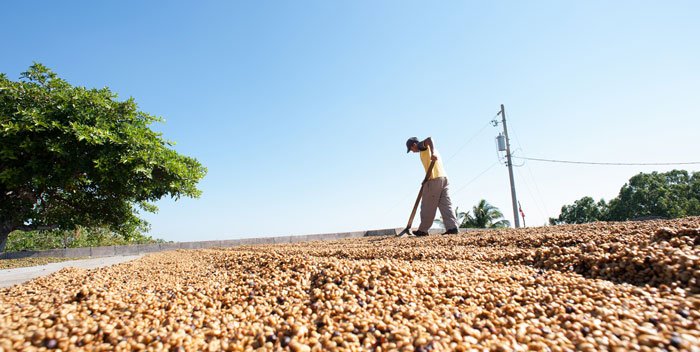
This process is often used in Brazil but is now in use in Indonesia. Once harvested, the coffee fruit is peeled off with a mechanical machine to remove the skin and most of its flesh. From here, the coffee beans are then dried in the drying tables. The remains of a sticky fruit flesh will usually fall on this process. (It is said that the remains of dried fruit flesh that gives extra sweetness and body on coffee).
- Honey (Miel) process.
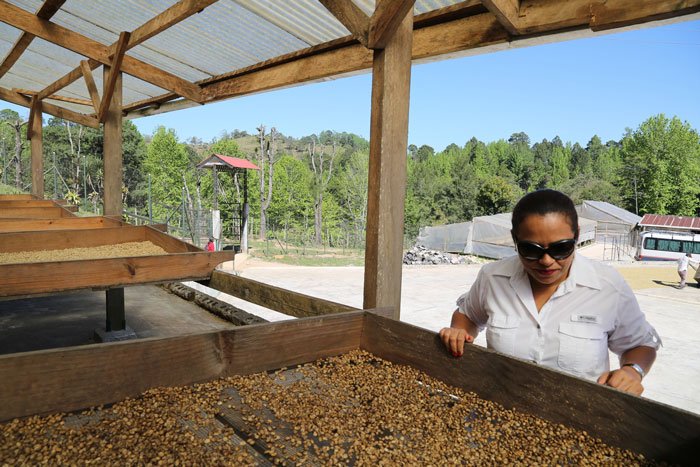
This process is somewhat similar to natural pulped and is commonly used in many Central American countries such as Costa Rica and El Salvador. Later this process is also increasingly popular in Indonesia. In the honey process, the coffee cherries will be peeled off with mechanical machinery, but this method uses less water than the pulped natural process. The engine of the depulper will be controlled to determine how much the flesh will remain left to stick with the seeds before being dried. This remaining meat skin in Spanish is termed with miel which means honey (honey). Simply put, on the honey process there is a bit of mucilage-or mucilage in English terms-that seem to stick to the coffee beans. From this process is then called honey process. So not for using honey.
- Semi-washed.
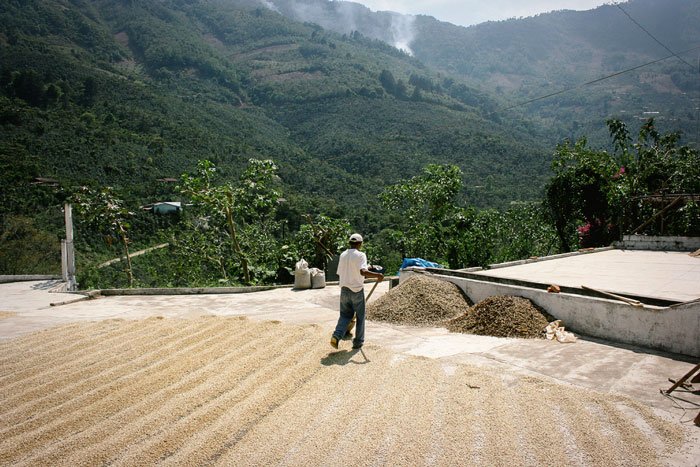
This process is very common in Indonesia and often we are familiar with the term 'wet milled'. The semi washed process involves two drying processes. After picking, the outer shell of coffee cherries is peeled using a depulper and dried briefly. If coffee humidity is generally left to 11-12% when drying process, then in the process of semi-washed, the coffee humidity leaves up to 30-35% before peeled again until the shape is really seed / green bean. Well, this green bean is then dried again until it is completely dry enough to be stored.
- Common taste profile:
Coffee with semi-washed process tends to have an intense sweetness level, fuller body, with a lower acidity level than washed processed coffees. Plus, supposedly coffee with this process also has more diverse flavors.
Thus the various coffee processing processes commonly used and known in the coffee industry. If asked "which process is better?" Certainly can not be answered because each process of course gives advantages, character and profile of its own taste. And this knowledge I get when I visit a friend who I know while in university and he is currently engaged in the field of coffee, hopefully this article useful for those of you who want to know about coffee. Thanks and congratulations on coffee!
gas bang gas
Oke kita gas penuh ya hehehe